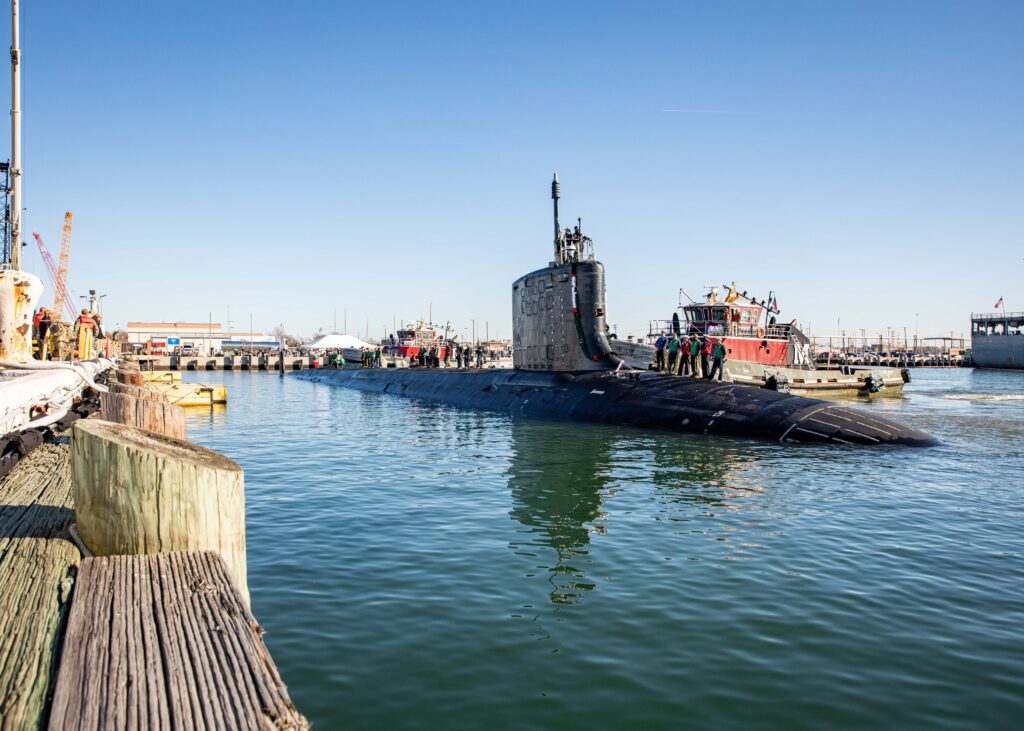
By Richard R. Burgess, Senior Editor
ARLINGTON, Va. — The U.S. Navy’s fiscal 2025 budget request proposes only six battle force ships, which, combined with planned ship retirements, would reduce the size of the battle force from 296 ships to 287 ships.
The Navy’s proposed $257.6 billion budget — which officials said prioritizes readiness over procurement, would include $32.4 billion for ship construction. Those funds would procure one Block VI Virginia-class attack submarine (SSN), two Flight III Arleigh Burke-class guided-missile destroyers, one Constellation-class guided-missile frigate, one Flight II San Antonio-class amphibious platform dock ship (LPD), and one medium landing ship.
The proposal for only one Virginia-class SSN, rather than two, was made out of concern for the submarine industrial base, which currently is delivering only 1.3 hulls instead of the desired two SSNs per year. The gap is designed to help realign the investments in the submarine industrial base. Under the Future Years Defense Plan (FYDP), the Navy expects to return to the procurement rate of two SSNs per year in fiscal 2026. Navy Undersecretary Erik Raven, speaking to reporters March 11 at the budget roll-out, said advance procurement for the SSNs is proceeding to “set up the program for long-term success.”
The ship construction budget also includes continued incremental funding for two aircraft carriers and second Columbia-class ballistic-missile submarine, the refueling and comprehensive overhaul of a Nimitz-class aircraft carrier, the service-life extension of three aircushion landing craft, and the purchase of two used commercial ships for use as sealift ships.
The procurement of the San Antonio-class LPD would mark a reversal from the 2024 plan to end procurement of the class. Navy Undersecretary Erik Raven, speaking to reporters March 11 at the budget roll-out, said the Navy is intent on growing the large- and medium amphibious warfare ship fleet to a minimum of 31 ships.
The FYDP features the procurement start in fiscal 2027 of a new class of ship, the light replenishment oiler (T-AOL).
Raven said the Navy currently has 88 ships under contract, with 66 of those under construction.
Planned ship retirements include two Ticonderoga-class guided-missile cruisers (Shiloh and Lake Erie); two Independence-class littoral combat ships (Jackson and Montgomery), one Whidbey Iland-class dock landing ship (Germantown); one Montford Point-class expeditionary transfer dock ship (John Glenn) and the four oldest Spearhead-class expeditionary fast transports (Spearhead, Choctaw County, Millinocket, and Fall River).
Rep. Rob Wittman, R- Virginia, a member of the Seapower subcommittee of the House Armed Services Committee, criticized the ship construction plan as too little.
“The president is once again proposing to shrink the Navy by reducing the Navy force structure from 296 ships in FY24 to just 287 in FY25. By only building six ships, President Biden is also threatening to devastate our naval fleet and the Hampton Roads industrial base by slowing aircraft carrier construction and failing to meet the two Virginia-class submarines per year cadence required to support the AUKUS security pact,” Wittman said in a March 11 statement.






